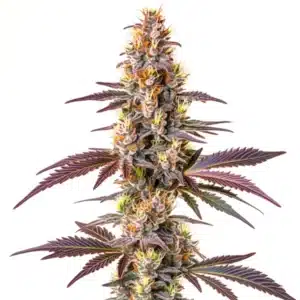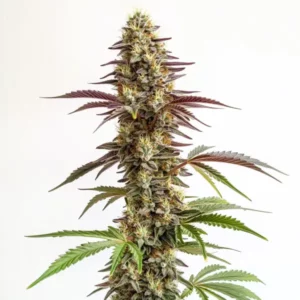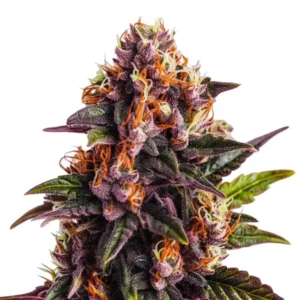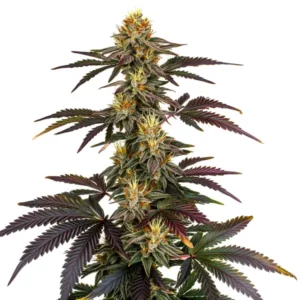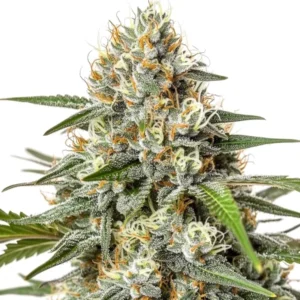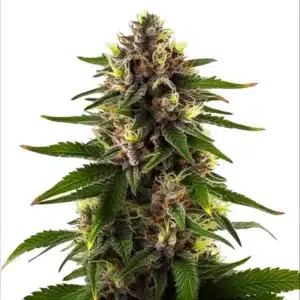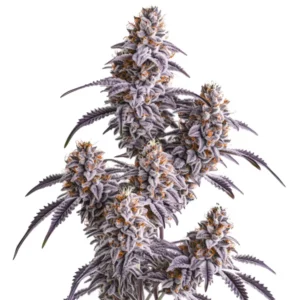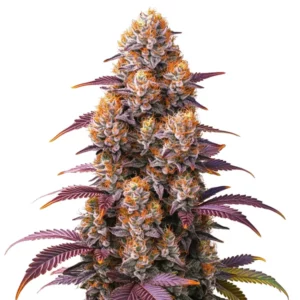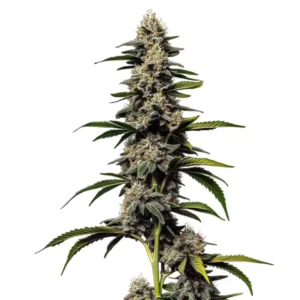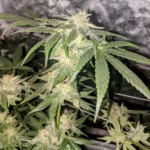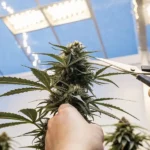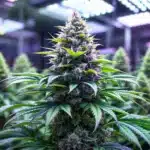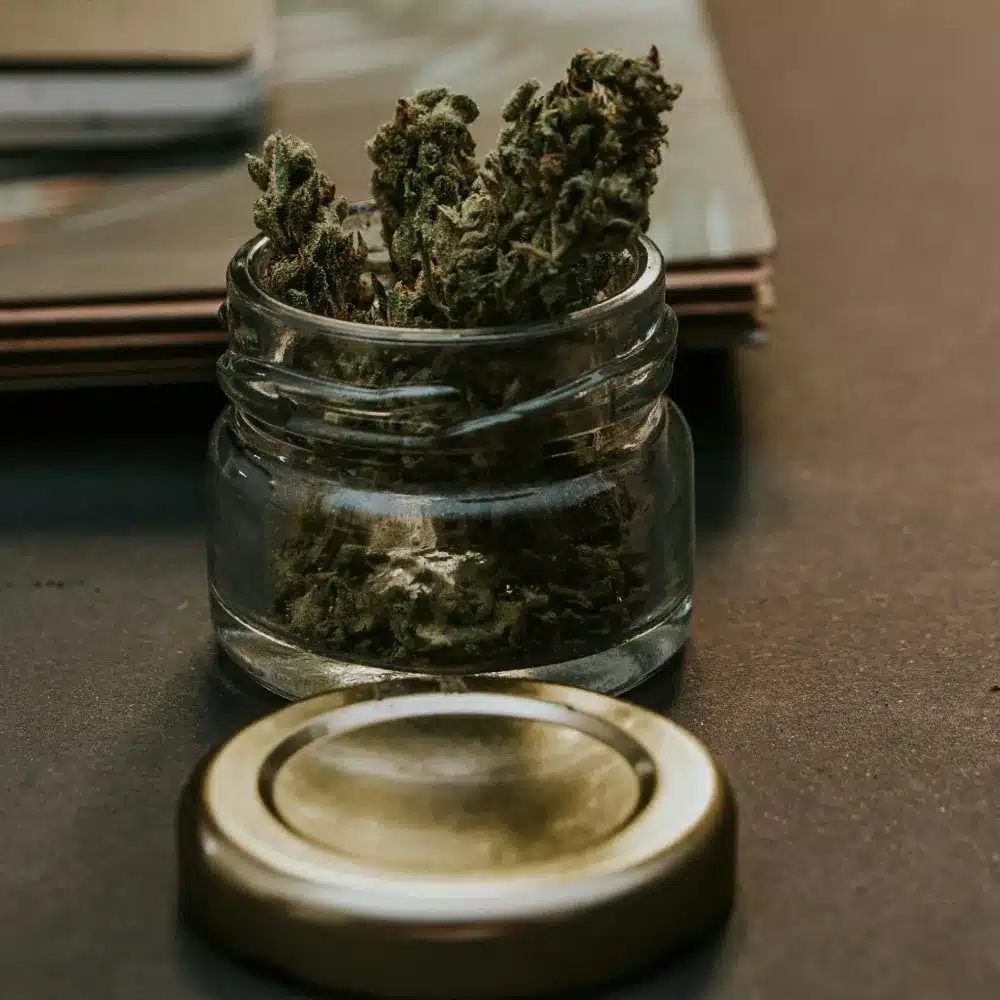
How Much Does a Weed Plant Produce?
How much does a weed plant produce?- As more states legalize weed and the plant gains acceptance, many people are trying their hand at growing their own cannabis at home. In most states where weed is legal, an individual is allowed to cultivate six plants, while a household can grow up to 12 plants. Some states have different limits, allowing either fewer or more plants.
But how much weed can you actually get from a single plant in terms of dried buds ready to smoke? Is it an ounce? A pound? Maybe even two pounds? The answer is complex because not all weed plants are the same size, and several factors influence how large a plant can grow and how dense its buds will be.
Recommended Strains
Blue Cookies Fast Version
|
|
THC | 18% - 20% (Medium) |
|
|
Type | Fast Flowering |
|
|
Yield | Medium |
|
|
Phenotype | 80% Indica / 20% Sativa |
Blue Cookies
|
|
THC | 18% - 21% (Medium) |
|
|
Type | Feminized |
|
|
Yield | Medium |
|
|
Phenotype | 90% Indica / 10% Sativa |
In this article, we will explore these factors and provide insights into the harvesting process to help estimate how much weed you can yield from one plant.
How Much Weed Can You Get From One Plant?
The yield of a single weed plant can vary significantly due to several factors. Key elements like plant strains, light intensity, CO2 concentration, and daily training play major roles in determining the final cannabis yield.
For example, autoflower strains typically produce smaller buds compared to photoperiod strains. Additionally, since autoflowers have less time to recover from stress, training them to shape their growth can be challenging, further reducing their yield potential.
The specific weight of yield can differ from one plant to another. On average, a single plant can produce approximately 907.2 grams (32 ounces) of wet weed, which translates to around 181.4 grams (6.4 ounces) of dried buds. (If you’re not yet familiar with common methods of calculating cannabis yield, check out our previous guide to weed measurements.)
Wondering where to purchase your preferred strain? Consider this trusted option, highly recommended by many Hey Abby growers for its reliability and wide variety of strains.
Promos & Deals
7 Factors That Determine How Much a Weed Plant Produces
- Type of Strain Cannabis breeders often create new strains with specific goals in mind. For example, Indica strains are usually bred to be resinous and high in THC, prioritizing quality over quantity. Some growers experiment with landrace varieties from different continents, but yields depend on the plant’s ability to adapt to foreign climates.
- Light A cannabis plant needs ample light for photosynthesis and to develop strong branches that support blooming buds. Photoperiod plants in the final stages of vegetation require a strict 12-hour light cycle to trigger flowering. Photosynthesis allows flowering marijuana plants to convert carbon dioxide and sunlight into energy, promoting larger buds. Insufficient light, especially during the vegetative state, drastically impedes growth, delaying flowering and reducing yields.
- Growth Duration Indoor cannabis plants typically take about 16-20 weeks to mature for harvest. Experienced growers may use light deprivation techniques to force the plant into the flowering stage, shortening the vegetative period by two to three weeks without affecting bud production. However, impatience can lead to premature harvests, especially around late September and early October, resulting in underdeveloped yields.
- Amount and Type of Soil Cannabis plants thrive in soil with a neutral pH, as nutrients like Iron, Nitrogen, and Phosphorus are readily available. These nutrients are crucial for strong branches, stems, and healthy leaves. A pH meter and soil test kit are essential before germinating cannabis seeds. Shallow soil limits root growth and nutrient absorption, while large pots allow roots to stretch and maximize nutrient uptake.
- Climate Sativa strains thrive in warm, moderately humid environments and have thin leaves to reduce transpiration. Indica varieties prefer cooler weather and tend to do well in the northern hemisphere. The climate preferences of different strains helps growers provide optimal humidity and temperature conditions, especially in grow tents.
- Size of Grow Area A large grow area ensures maximum light penetration, facilitating photosynthesis. Good airflow prevents humidity buildup, reducing the risk of powdery mildew. Growers also benefit from having enough space to implement techniques like the Screen of Green (SCROG) to maximize yields. In confined grow areas, insufficient light and poor airflow can hinder plant growth and increase the likelihood of mildew.
- Wet vs Dry Yield Cannabis end-users and product manufacturers prefer dry yield for making edibles, pre-rolls, or solventless concentrates. Dried buds are more potent and taste better due to reduced chlorophyll during the drying stage. Wet yield is prone to degradation and mildew infestations.
How Much Does a Weed Plant Produce? Indoor vs Outdoor Growing
Many factors affect the size of a weed plant, but generally, if you’re growing a healthy plant, you can expect the following yields:
- Outdoor plant: About ½ pound of buds, or approximately 224g or 7.90 oz
- Indoor plant: About ¼ pound of buds, or approximately 112g or 3.95 oz
These are just estimates. Outdoor plants often get much larger because they aren’t limited by space, sometimes yielding closer to a pound per plant or more. Indoor plants, on the other hand, are often restricted by space and light. A plant grown in a tent or a small area won’t reach the size of one grown in a spacious basement.
It’s important to note that these yields are based on healthy plants. If a plant experiences nutrient deficiencies, pest infestations, mold, or insufficient light, the yield will be significantly lower.

Strategic Plant Management
Early Growth Management:
The crop begins with nutrients that stimulate the roots of the plants for optimal growth. Add beneficial fungi such as mycorrhizae. You can use a substrate rich in nutrients, living soil type substrates are perfect for having healthy plants from the beginning of cultivation. When the plant is in the second week of life, begin applying the growth fertilizers and stimulants of this phase. With all of the above we guarantee that you will have strong and healthy plants.
Monitoring and Control
Tracking the PH, EC/PPM, and water temperature allowed for precise environmental adjustments. This ensured optimal growing conditions throughout the cultivation process, directly impacting how much a weed plant can produce.
Lighting Strategy
Apply the number of hours necessary for the plant to grow correctly. Avoid excess light at the beginning and only apply lighting, whether LED or sodium, directly from the second week of growth. Use lights with the correct light spectrum for the growth phase and keep the lights at a safe distance from the plants to avoid light stress.
Pest and Disease Management
Maintaining the health of your cannabis crop is crucial, as pests and diseases can significantly impact yield. Implementing an integrated pest and disease management strategy is essential. This involves combining preventative measures with timely interventions. Regularly inspecting your plants for signs of stress, pests, or disease allows for early detection and treatment, reducing the risk of widespread issues.
Effective strategies may include environmental controls to prevent infestations, using natural predators for biological control, and selectively applying pesticides and fungicides when necessary. Proactive management ensures plant health and yield integrity, preventing minor issues from escalating into major problems.
Harvest Timing
The timing of your cannabis harvest significantly affects both the quantity and quality of your yield. Harvesting too early can lead to lower potency and smaller buds, while waiting too long may reduce THC levels and overall quality. Key indicators for the perfect harvest time include observing the color and condition of trichomes and pistils. Trichomes should shift from clear to milky white, and the majority of pistils should darken and curl, signaling peak maturity. By timing your harvest correctly, you can ensure the highest quality output, maximizing the plant’s potential for potency and yield.
5 Tips for Increasing Yields
To enhance cannabis yields, various techniques such as watering, lighting, fertilization, and managing vegetative and flowering stages are crucial. Here, we’ll focus on five popular pruning and training methods to maximize cannabis production without significant costs. These practices are most effective during the vegetative stage and can be applied indoors or outdoors. Depending on your cultivation setup, you may use these techniques individually or in combination to achieve the best results.
- Removing Lower Branches: Most cultivation methods involve pruning, particularly the removal of lower, non-productive branches. Performing this early in the vegetative stage helps the plant concentrate on growing taller, more productive branches, thus increasing the weight and size of the buds.
- Removing Dead or Dying Leaves: In indoor setups, lower leaves often die off as higher leaves grow and block light. Removing these dead leaves reduces disease and pest risks, allowing the plant to channel energy into healthier leaves and better bud development.
- Regular Pruning: Consistent removal of branches with long internodes or gaps between nodes during the vegetative stage is a standard practice for both indoor and outdoor growers.
- Topping Plants: Topping involves cutting the main shoot to stimulate the growth of secondary shoots. Repeated topping doubles the number of dominant shoots each time, promoting a bushier plant.
- Low-Stress Training (LST): Instead of topping, LST involves tying down the main shoot to encourage horizontal growth, which makes other shoots grow faster.
By carefully monitoring and experimenting with these techniques, you can identify the most effective methods for optimizing your cannabis yields.
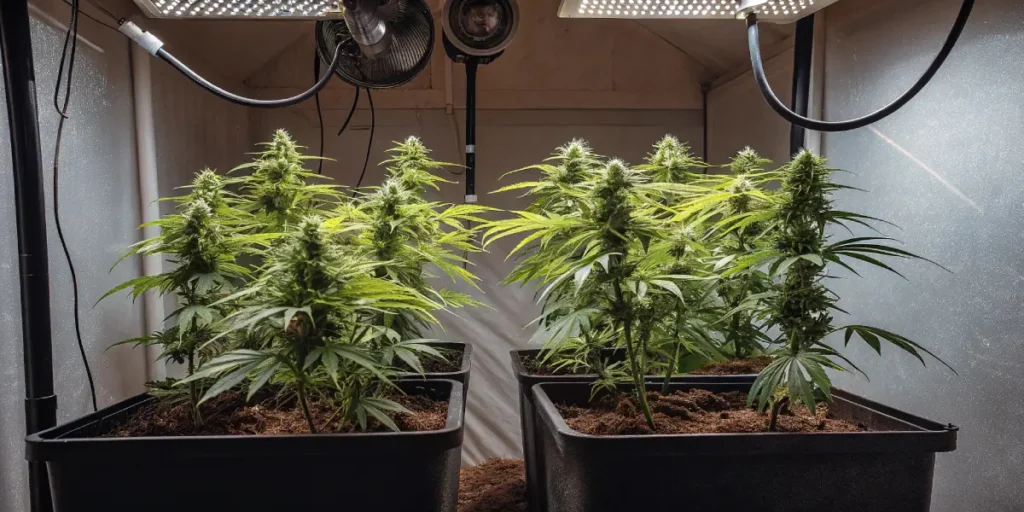
3 Most Heavy Yield Cannabis Strain
Not here, we forget about you that’s why we bring you 3 great genetics that deliver crops from another planet. With crops in optimal conditions you will be able to obtain the maximum of each of these cannabis genetics and you will ensure heavy harvests with dense buds full of sticky resin, which will leave your fingers black.
How Much Does a Weed Plant Produce? – Blue Cookies Fast Version
Blue Cookies Fast Version is a robust cannabis strain that is perfect for novice growers due to its ease of cultivation. This strain thrives both indoors and outdoors, showcasing its versatility. Blue Cookies Fast Version produces stunning dark purple buds coated with a frosty layer, indicating high-quality cannabis. Known for its impressive THC content of 18%-20%, this strain delivers swift and enduring calming effects with a delightful blueberry taste. Although Blue Cookies Fast Version is an Indica-dominant hybrid, its significant Sativa characteristics make it suitable for consumption any time of day or night.
To be a fast flora genetics, this genetics delivers great outdoor harvests ranging from 19.40 – 22.92 oz/plant. For their part, indoor gardeners can achieve an incredible 1.14 – 1.47 oz/ft² of fat buds packed with resin and with a delicious aroma and sweet flavor.
How Much Does a Weed Plant Produce? – Strawberry Diesel
Strawberry Diesel has long been a top choice for medicinal cannabis cultivators. Known for its significant pain-relieving properties, it is frequently recommended for alleviating muscle pain, chronic pain, inflammation, and various body aches. With an average flowering time of just 9-10 weeks, Strawberry Diesel allows for multiple harvests each year. This strain can produce impressive yields, reaching up to 13-17 oz/plant. Enjoy your bountiful harvest!
The parents of NYC Diesel and Strawberry Cough when mixed do an incredible job, delivering large plants that provide wonderful harvests. The colas are usually heavy and dense due to the amount of buds obtained. If you perform Apical or FIM type pruning you will surely obtain plants with strong arms that support the weight of the robust and heavy buds. For indoors, we recommend using SCROG meshes with which you will maximize the plant’s harvest or growing with a SOG system. With both cultivation systems you will optimize space and achieve a harvest of the highest quality.
How Much Does a Weed Plant Produce? – Gelato x Kosher Kush
Gelato x Kosher Kush is a remarkable cross between Gelato and Kosher Kush, merging the best traits of both strains. This combination offers a deliciously sweet and creamy flavor from Gelato paired with the earthy and pungent notes of Kosher Kush. The result is an enticing aroma that delights the senses. Known for its exceptional quality and unique flavor profile, Gelato x Kosher Kush has become a favorite in the cannabis community.
When it comes to yield, Gelato x Kosher Kush offers impressive results. Indoors, you can harvest approximately 1.47 – 1.64 oz/ft² while outdoor growers can expect up to 12 – 15 oz/plant. This strain is adaptable to both indoor and outdoor environments, making it a versatile choice for any grower. For indoor growth, ensure adequate lighting and a controlled environment. Outdoors, a sunny, warm climate is ideal. Proper pruning and trimming will enhance air circulation and optimize bud development, allowing even beginner growers to achieve excellent results.
Experience the soothing effects of Gelato x Kosher Kush and let your stress dissolve. This indica-dominant strain provides a blissful, euphoric high that relaxes both mind and body. Its creamy, sweet aroma with earthy and citrus hints will enchant your senses, while the sweet berry and spicy flavors will delight your taste buds. Perfect for unwinding in the evening or seeking a moment of serenity, Gelato x Kosher Kush is your ideal companion for a relaxing and enjoyable experience.
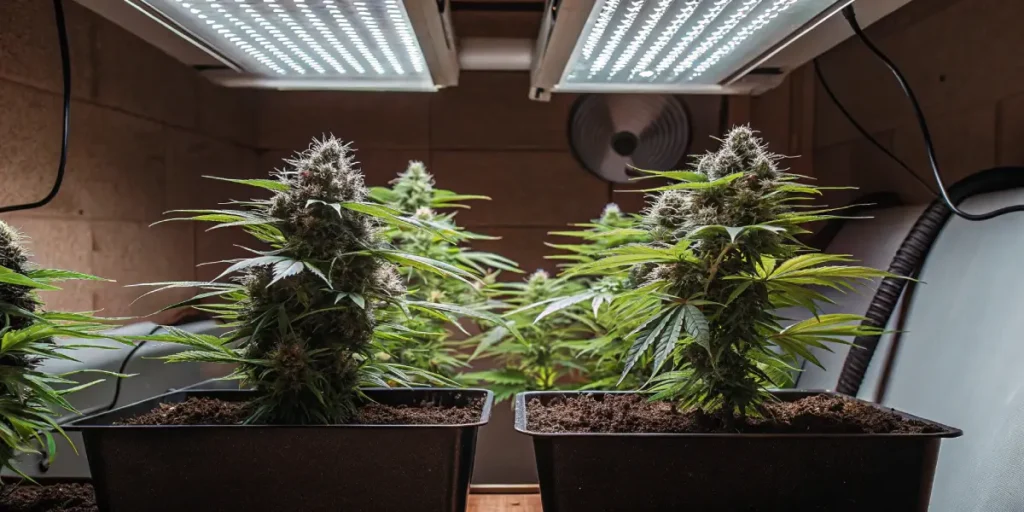
FAQs about how much does a weed plant produce
How long does it take for a weed plant to yield?
Growing a cannabis plant can take between 4 to 8 months, depending on your growing environment. When cultivating indoors, you have full control over the environment, allowing your plants to flower in just a few weeks. This can significantly impact how much a weed plant produces.
How much weed can you yield per acre?
Most cannabis cultivation in California happens outdoors on small-scale farms, typically under one acre in size. On average, these outdoor farms yield approximately 0.019 pounds of cannabis per square foot of canopy, equating to around 830 pounds per acre.
Do seeds yield more than clones?
Over time, a cannabis plant’s genetics may weaken, leading to challenges in resisting environmental stresses, diseases, and insects. Consequently, a plant grown from seed typically produces a higher yield compared to one grown from clones. Discover how much does a weed plant produce when grown from seed versus clones.
What should my weed plant look like after 4 weeks?
At week 4 of the flowering stage, your cannabis plants will have ceased all growth and will be focusing entirely on bud development. Although the buds will still have white hairs protruding, they will continue to increase in size and density daily. If you’re wondering “how much does a weed plant produce” at this stage, expect to see significant growth in the buds.


